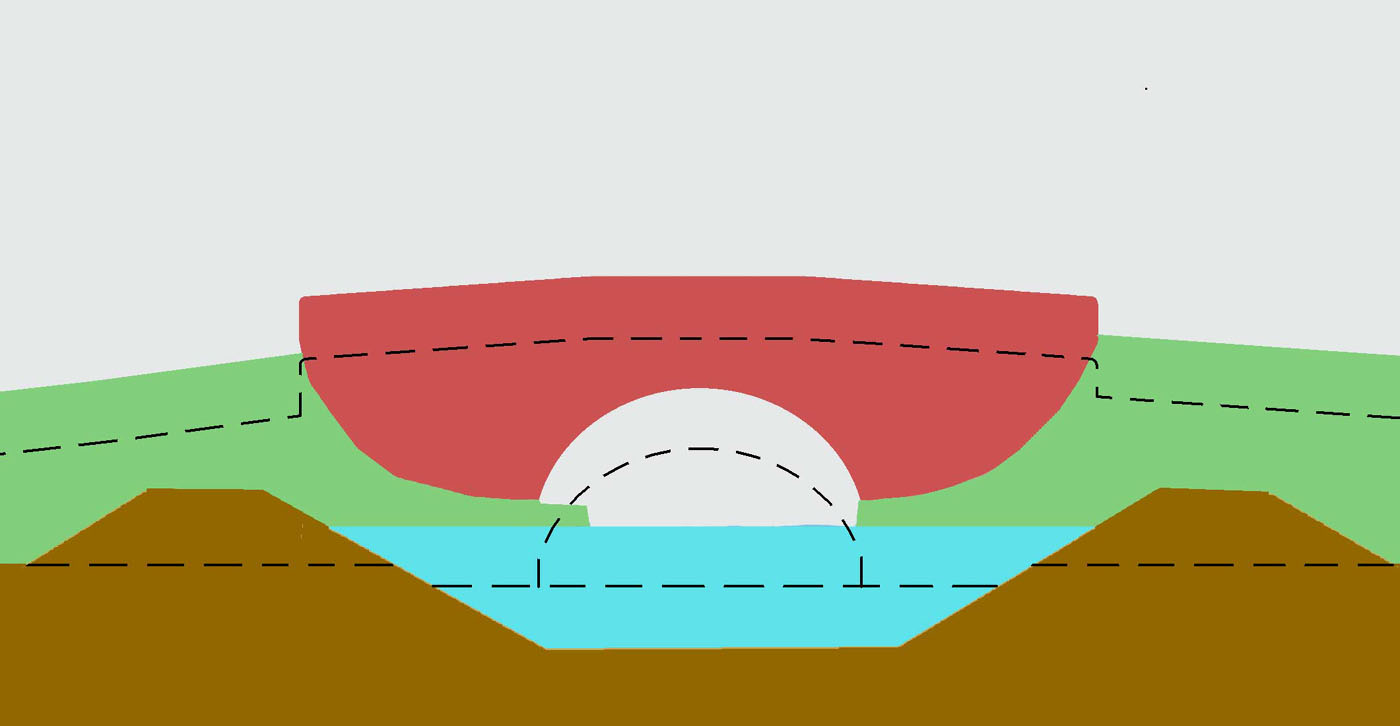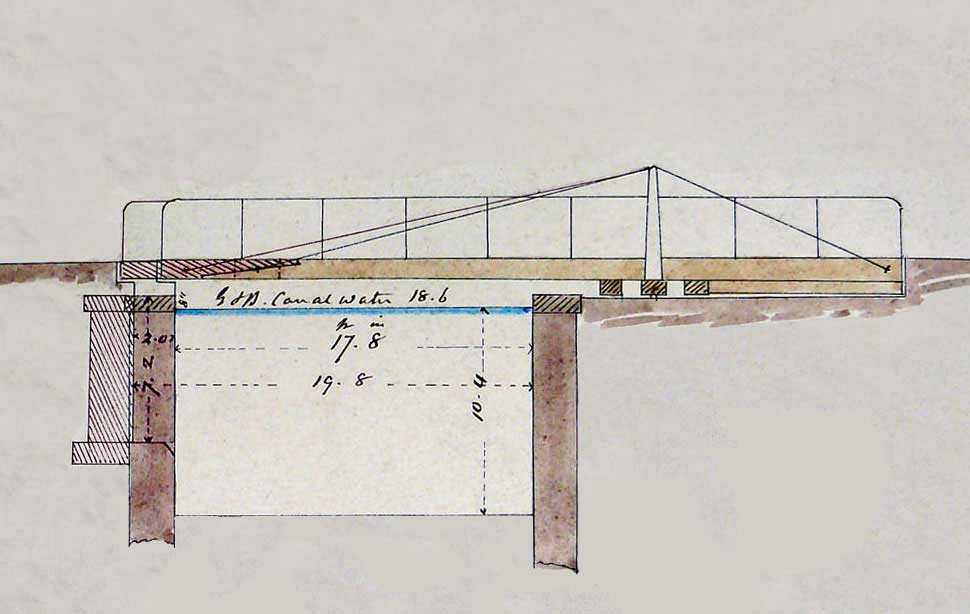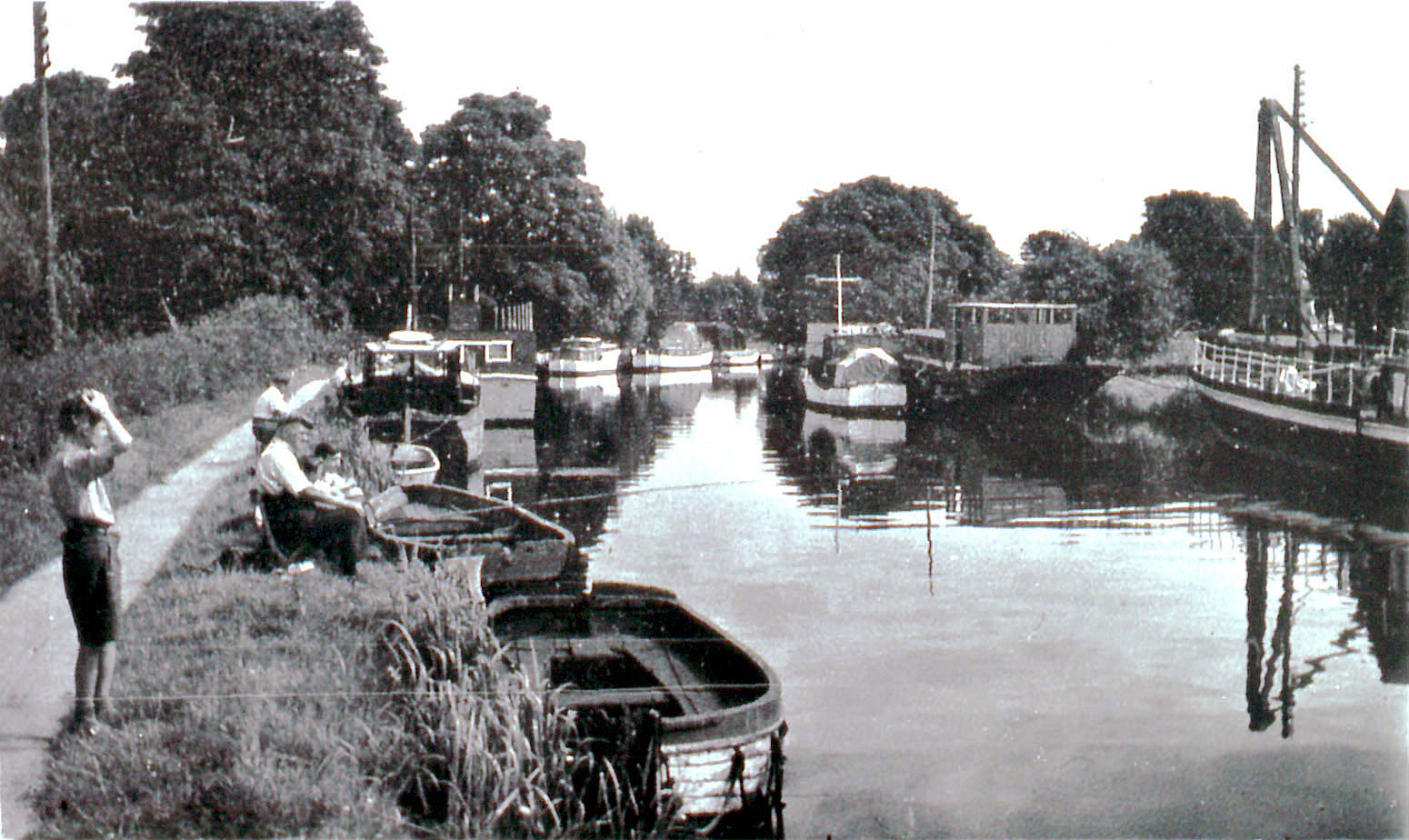The structure of Walk Bridge changed several times to accommodate the needs of the nearby Gloucester & Berkeley (Ship) Canal.


This bridge takes its name from nearby Walk Farm, remembering the walkers (fullers) who once helped to produce woollen cloth at nearby Whitminster Mill.
The original brick bridge had to be rebuilt when this pound was raised to suit the intersection with the Gloucester (Ship) Canal, and the illustration shows how this widened the pound, which then had a depth of 10 feet in the centre.
The bridge carried a private road, but by the 1850s, it was increasingly used by villagers, and the extremely high humped back was becoming a problem. So the then-owner of Whitminster Court offered to pay for it to be replaced by a swing bridge.


The first swing bridge, installed in 1855, had a restricted span of 17ft 8in compared with around 20 ft for most other bridges. This was fine for barges to pass through, but in 1869, there was a need to widen the span.
Ever since this part of the Stroudwater Canal had become a feeder for the Gloucester (Ship) Canal in the 1830s, the Gloucester Company had been responsible for keeping it well-dredged. For years, this had been achieved by men working a spoon dredger for months each year. Then, in 1869, the Gloucester Company wanted to start using their steam bucket dredger, which could do the work in a couple of weeks. So they widened the span as shown.


The bridge illustrated was installed in 1926, and the story of change continues.
In the 1950s, the need to strengthen canal bridges carrying county roads was a significant factor in promoting the closure of the canal. Soon after the Act of closure was passed in 1954, the local highways authority replaced the swing bridge with the current low-level fixed concrete structure.
The present restoration project is planning to replace this.


The pound through Walk Bridge is notably wide, with embankments built on either side of the original canal in the 1820s, when the water level needed to be raised to form the junction with the Gloucester (Ship) Canal.
As traffic on the Stroudwater Canal died out in the mid twentieth century, the pound became a useful mooring site for leisure craft that were primarily using the ship canal. This practice continued after the Stroudwater was formally closed in 1954, as the pound was purchased and maintained by British Waterways (now Canal & River Trust) because it is a vital water feeder to their ship canal.
For details about Walk Bridge, search this site for 'walk'.
For the benefit of using a steam dredger, see D2460/4/4/1 Mar 1870.